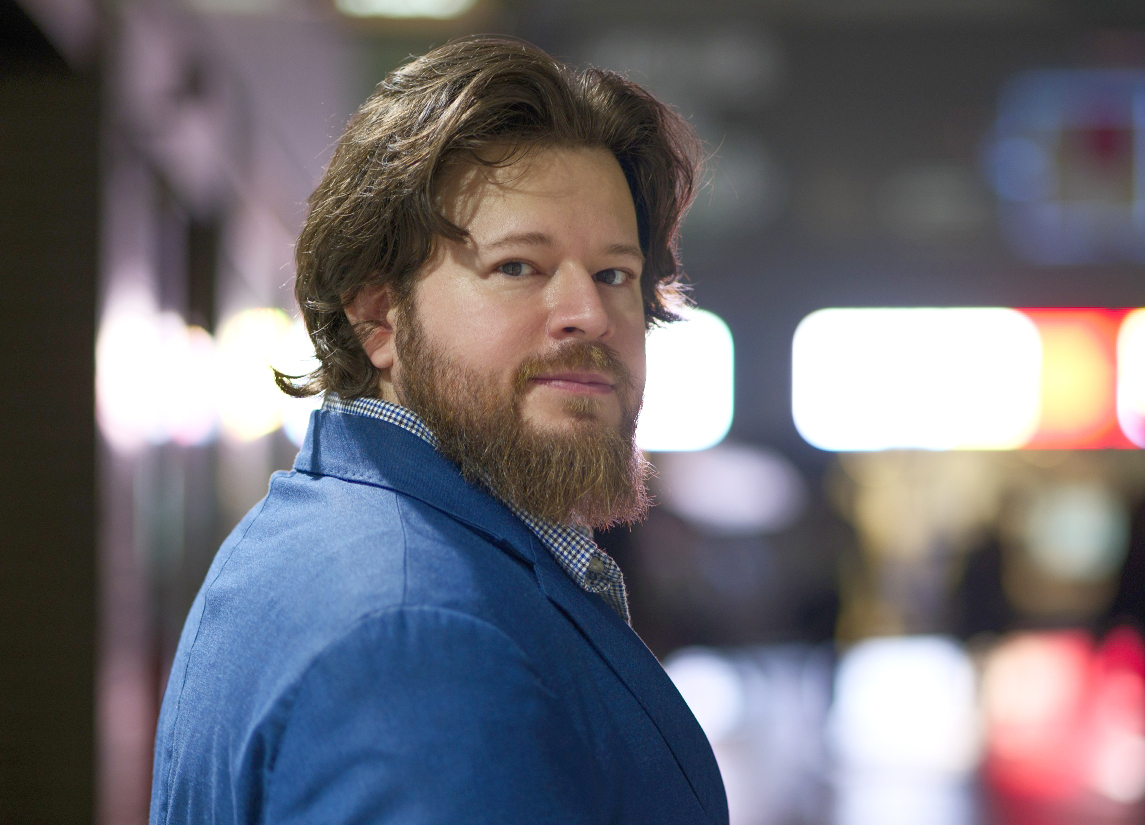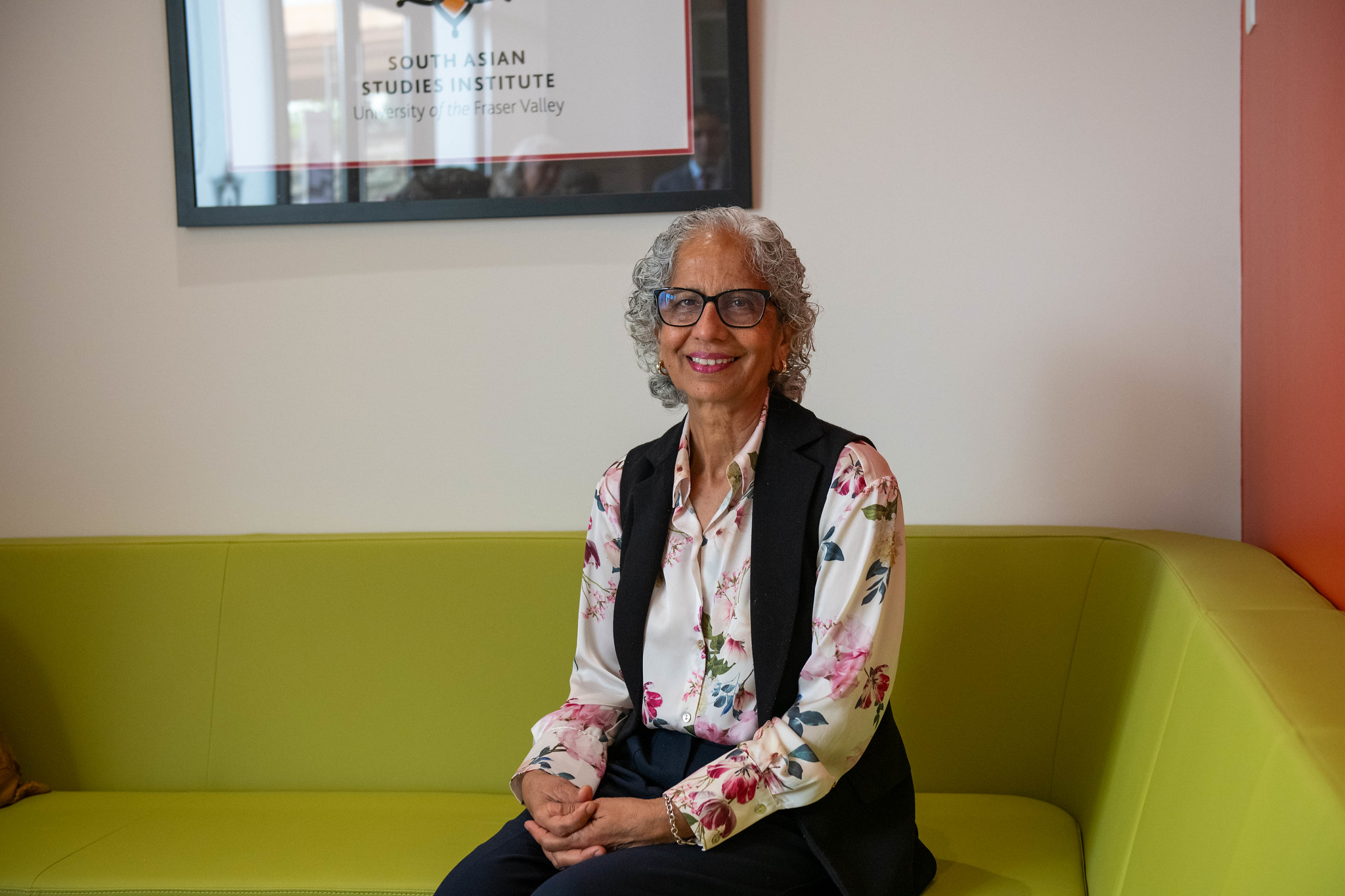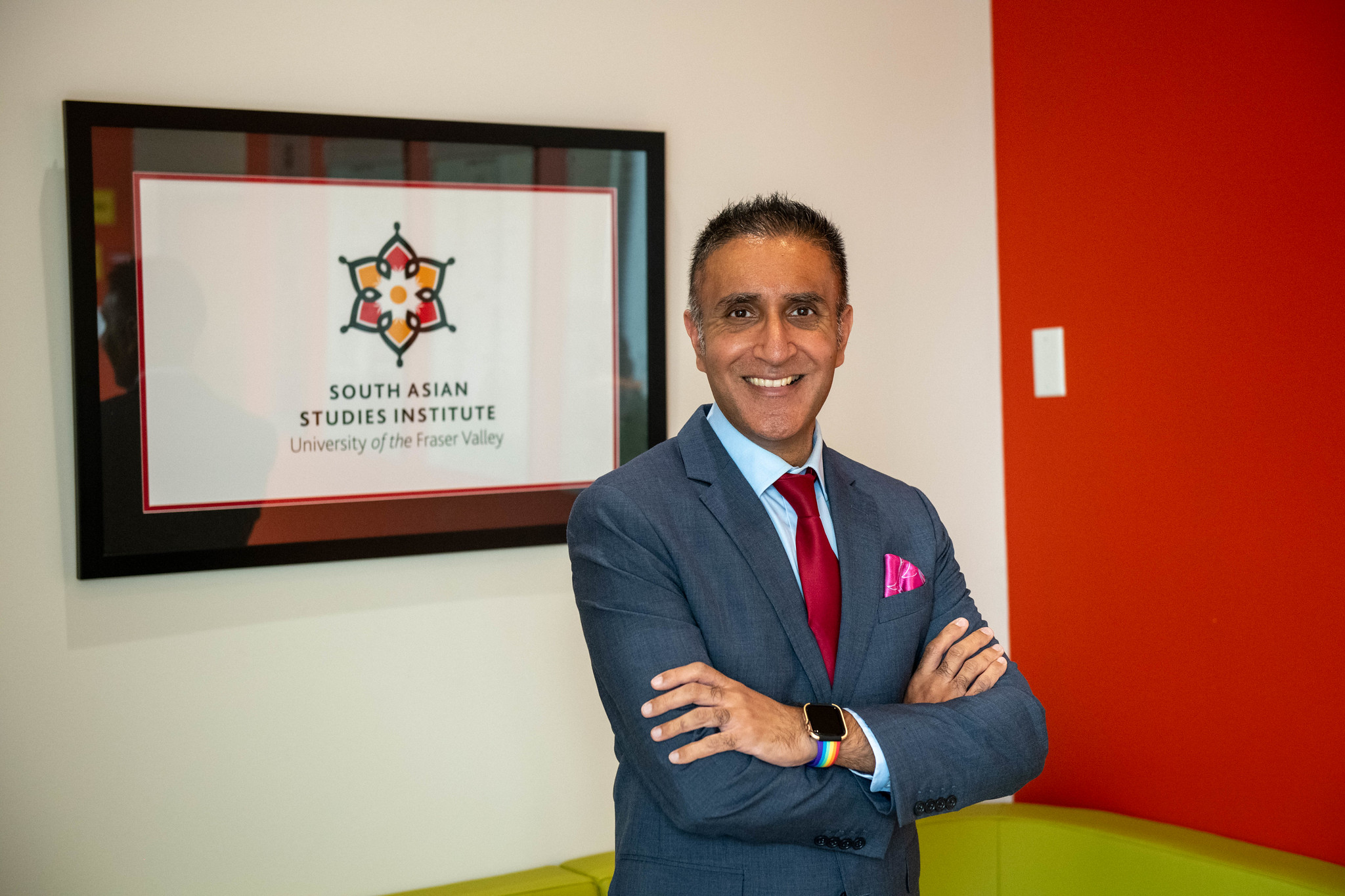Building physical strength and emotional relationships: UFV students guide elders in exercise
 The sound of the Beach Boys fills the room, bursting from a tiny boombox in the corner.
The sound of the Beach Boys fills the room, bursting from a tiny boombox in the corner.
The wheelchairs, about 15 of them, are arranged in a circle with a few gaps.
The grey-haired elders all have their eyes fixed upon the circle’s centre — a group of energetic students from the University of the Fraser Valley.
For the past hour, the elders have been shuffling their feet and stretching to the music. Others have passed the time by lifting weights or bouncing a ball. Whatever the action, they’re doing it with the encouragement of UFV students.
It’s a typical scene at the Worthington Care Centre in Abbotsford every Monday and Wednesday morning, thanks to a partnership between Fraser Health and UFV that is also a research project looking into the benefits, in terms of cognitive and physical functioning, for the elders involved in the activity program.
The program involves student volunteers from both the Nursing and Kinesiology and Physical Education departments. The students collaborate twice a week to work with the elders, not only to help them develop their physical skills, but also to form relationships — an important aspect of the initiative.
“They’re helping the residents roll through a variety of exercises, using weights and resistance bands,” notes UFV nursing professor Shelley Canning, one of three co-investigators of the research project along with UFV kinesiology professor Michael Gaetz and Fraser Health physiotherapist Adrienne Sim. “It’s been a great experience for the elders as they’ve had the opportunity to maintain and even improve their physical functionality. And the students have had the opportunity to work in a very meaningful way with the elders by forming relationships.”
Noting that physical decline is an expected effect of aging and of living in residential care, Canning emphasizes the importance of a program of this type. One of the goals is to track and measure improvements in the physical abilities of the participants.
“The program was already running but just once per week before we began the study,” notes Canning. “Our research is really a way to evaluate and demonstrate the importance of programs like this in residential care. The research is really important to this population, as remaining active , i.e. maintaining the ability to transfer safely, decreasing the likelihood of falls etc, is really integral to their quality of life. We are hoping to demonstrate how valuable exercise programs like the one at Worthington are. Hopefully our study can help with future program planning ensuring that structured exercise programs are integral parts of life in residential settings.”
The Worthington staff added a second day of exercise and purchased some small equipment such as weights and resistance bands to provide an activity program focusing on building strength and balance. The students provided extra support to help ensure that all the residents really benefited from the 45-min exercise classes.
“Our working hypothesis is that by participating in these classes the elders will maintain or improve cognitive and physical functioning while non-participants (our control subjects) will experience typical age-related declines,” says Canning.
Canning and Gaetz are collecting data by measuring participant and control cognitive and physical function at four intervals — each two months apart.
The students have been involved both in helping to run the activity groups and in the assessments/data collection process.
In addition to the valuable research data being gathered, Canning believes it’s important for students to gain first-hand experience working with this particular age group.
“Population trends are showing us that we’ll have lots of elders for these students to work with in the future,” says Canning. “So it’s really important for students to have a meaningful opportunity to develop their skills in this area.”
Gaetz echoes Canning’s sentiments regarding the benefits to UFV students.
“This experience is something the students can use in their professional careers so they can learn more about the day-to-day functioning of these folks, and how to best help them in the future,” said Gaetz.
In addition, Gaetz believes the partnership is a way to give back to the community.
“A lot of these elders have spent their lives contributing to the community, and now it’s UFV’s opportunity to give back,” said Gaetz. “It’s creating a really unique synergy between the young people in the community and some people who have been committing their time to the community their whole lives.”
One of the students involved in the project is fourth-year nursing student Sarah McMurchie.
Since starting the program in November, McMurchie has seen a progression in the strength of the elders she’s working with. She believes it’s due to the repetition of attending twice a week. McMurchie has also seen an improvement in the elders’ cognitive skills and socializing.
In addition, she’s noticed that the elders are often persistent and stubborn, wanting to continue lifting weights even when it’s not their turn.
“They just really want to participate, and that’s great to see,” says McMurchie.
While the consistent visits help the students in their ability to monitor the progression of the elders, it also allows them to forge relationships. For McMurchie, building that trust is an important aspect.
“It feels great to be able to come here and know that they want to see you, and you get to know the different people,” said McMurchie. “It’s a great partnership. You can see the relationship — the therapeutic relationship — that you’re building. And it makes such a difference.”
McMurchie understands what it’s like to grow from experience. Remembering back to her first clinical rotation as part of her nursing degree program, which was done at the Worthington, everything was brand new and “a little scary.” Now she’s more comfortable with herself, and with the role of working with geriatric clients — a role that has become her favourite.
Meanwhile, Fraser Health and the Worthington have been evaluating the program with the hopes of future funding to continue a similar initiative.
Worthington manager Jeannie Collinson has seen a change since the program was introduced.
Overall, she’s very excited about the partnership.
“It’s added a new dimension for us,” said Collinson. “The involvement has been encouraging our patients. We’ve had a sense for a very long time that this program is very valuable. And with the feedback we have, I’d love to see it continue.”
Collinson realizes that maintaining one’s physical and cognitive self goes hand-in-hand.
“It’s all about keeping the physical body active — and it rolls over into life, too.”
The students and residents have played a big part in those changes, adds Collinson. As have the staff at the Worthington.
Sarah Little is one of the rehab assistants who has been helping run the classes on Mondays and Wednesdays. While organizing the students and the elders, Little has seen first-hand the changes the program has spurred.
She’s watched the elders increase their strength and mobility, while forming friendships with the students at the same time.
“The social aspect is also bringing people out,” says Little.
“I think the program is great for strength and mobility, and they get out and more and are challenging themselves — I’ve seen great outcomes.”
Betty, a resident of the Worthington, loves how the exercise makes her feel.
“I believe in exercise and I come to all of the classes — I enjoy that,” she says while sitting her in wheelchair. “It makes you feel good.”
Helping the students also makes Betty feel good, which is why she’s continually encouraging them on their learning journey.
“We have some pretty nice ones. I said to one of them, ‘You’re going to make a good nurse.’ When they’re good, I always let them know. You have to encourage them, because it’s quite a step for them to make.”
Bill, 89, often attends the class for both the social and physical aspect.
“Oh yeah, I enjoyed it,” he says after a Monday morning class. “Like I said, it keeps you mobile and keeps you active.”
The program also gives him a sense of community involvement. He takes pride in the fact that he’s helping the students through their program, and helping them collect valuable information that can be used to help others.
“Well it’s something they should know… and it keeps them active too,” he said about the students. “I feel pretty nice knowing I’m helping. We can help each other. We’re one big family.”
This article is featured in the Spring 2012 issue of UFV Skookum magazine.





